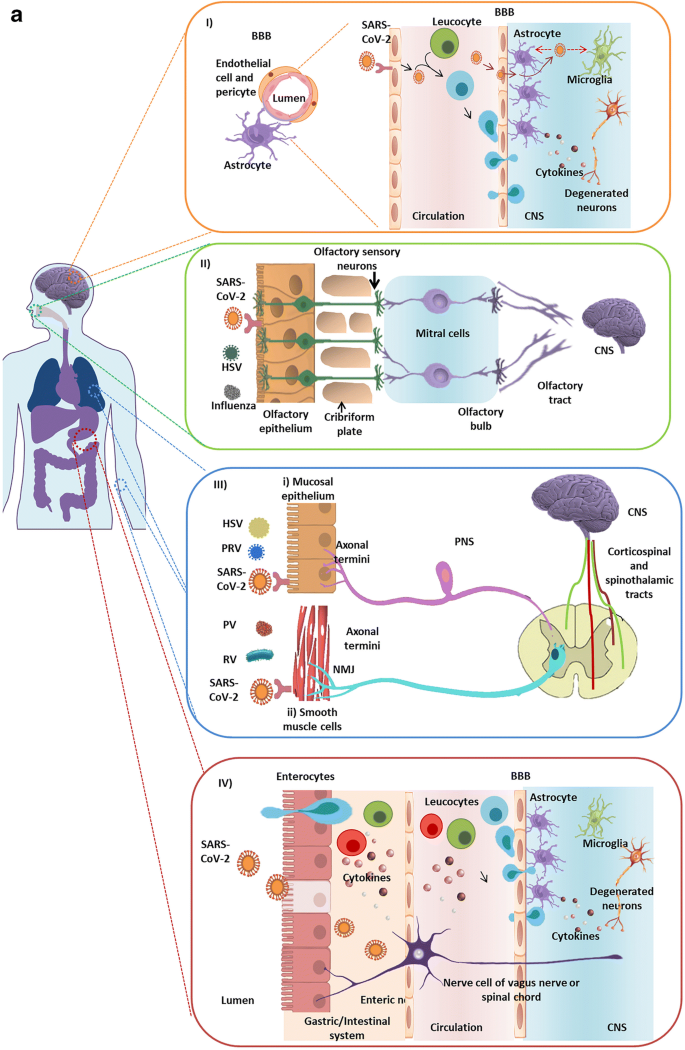Abstract
The worldwide pandemic caused by the severe acute respiratory syndrome coronavirus 2 (SARS-CoV-2) has infected an estimated 200 million people with over 4 million deaths. Although COVID-19, the disease caused by the SARS-CoV-2 virus, is primarily a respiratory disease, an increasing number of neurologic symptoms have been reported. Some of these symptoms, such as loss of smell or taste, are mild and non-life threatening, while others, such as stroke or seizure, are more critical. Many of these symptoms remain long after the acute illness has passed, a phenomenon known as “long COVID” or postacute sequelae of SARS-CoV-2 infection (PASC). Neurological symptoms can be difficult to study due to the complexity of the central and peripheral nervous system. These neurologic symptoms can be difficult to identify and quantitate. This narrative review will describe approaches for assessing neurologic manifestations of COVID-19, with examples of the data they provide, as well as some directions for future research to aid in understanding the pathophysiology of COVID-19-related neurological implications
Copyright © ۲۰۲۱ Elsevier Inc. All rights reserved


